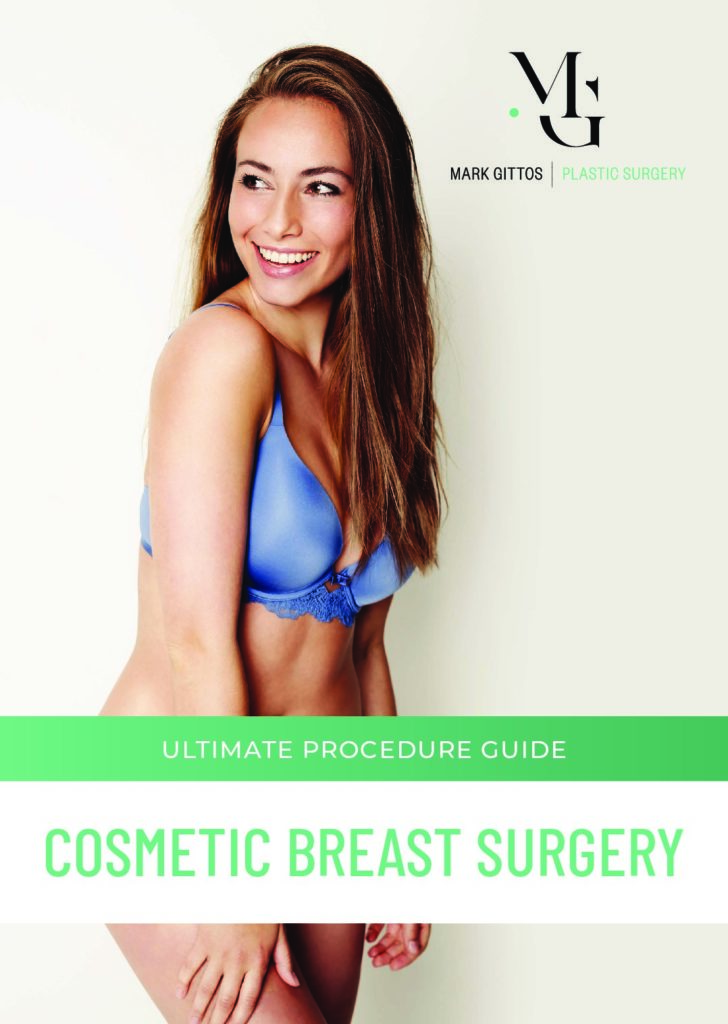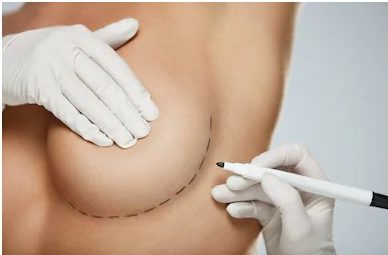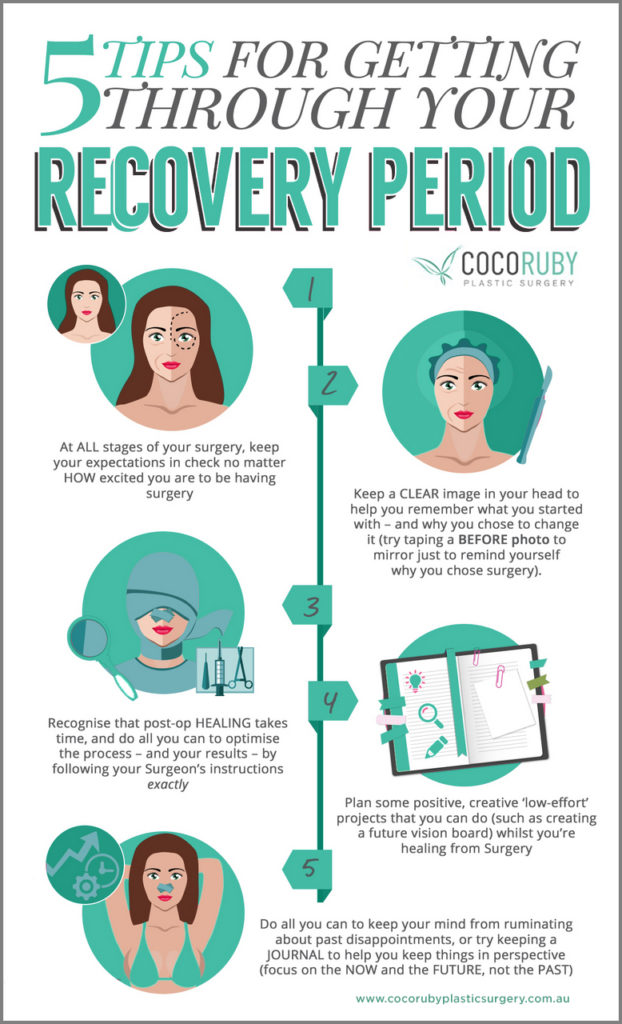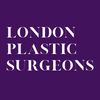Improving your Recovery after Breast Augmentation Surgery
Tips and techniques for recovery after breast augmentation. Knowing what to expect after your surgery can help reduce anxiety and improve your healing. You can help improve your surgical results by following your post-operative instructions closely. Here are some ideas to help.
About Breast Augmentation Recovery
Undergoing breast augmentation surgery is an extremely personal decision. While it may take you some time to come up with a decision, the results of the procedure can have a significant impact on your self-esteem. But before you finally achieve your desired aesthetic goals, there are several factors that need to be considered in the postoperative phase and the lack of understanding of what to expect during the recovery period can make you anxious. Let’s take a look at the different phases of breast augmentation recovery for you to get a glimpse of what to expect postoperatively.
Download Mr Mark Gittos’ Guide to Cosmetic Breast Surgery

What are the Best Types of Breast Augmentation Surgery?
There are two main types of breast augmentation:
- Cosmetic breast implant surgery: This surgical procedure alters the size and shape of the breasts by using a silicone or saline implant that is inserted behind the breast tissue or below the pectoralis muscle (chest muscle).
- Breast reconstruction surgery: This surgical procedure reconstructs or rebuilds one or both breasts using breast implants or fat tissue from another part of the body of the patient. Breast reconstruction surgery is usually performed in patients who had surgical removal of the breasts to prevent the spread of breast cancer.
For best results in extremely saggy or droopy breasts, breast augmentation can be combined with a breast lift (mastopexy).

How long is the Recovery Time after Breast Augmentation?
It’s important to keep in mind that every patient is unique; therefore, the recovery time may vary from person to person.
In general, a full recovery should be achieved after 6 to 8 weeks.
As a general guide you can fly or drive after a few weeks, back to the Gym and Exercising after 3-4 weeks, and a Spray Tan after 4-6 weeks
After your surgery, Mr Gittos will assess your overall health status and provide you with a more detailed breast augmentation recovery timeline.
When can I return to work after a Breast Augmentation?
Your ability to return to work will depend on your health and ability to heal
- Light work – working from Home, computer work or light office work – within 1 -2 weeks
- Moderate work – Moving and LIfting things – within 3 to 4 weeks
- Strenuous work – Heavy duty work – within 6 to 8 weeks
What can you expect during the Breast Augmentation Recovery Period?
Immediately after breast surgery, you will likely feely groggy due to the effects of the general anesthesia. If the breast implants were inserted under the pectoralis muscle, you may feel a tight sensation or muscle ache in your chest. As your chest muscle stretches and relaxes, these discomforts will gradually decrease.
After a few hours, you may experience a reduction in sleepiness and breast soreness. Your surgeon or nurse will wrap your operated breasts with a special bra or an elastic bandage to support the healing breasts and prevent trauma to the incision line. Once the health care team has evaluated your health condition and there were no untoward signs and symptoms, you will be then discharged from the hospital. However, it is required that you request someone to drive you home because you may still experience confusion and weakness.
In the first 3 to 5 days, you’ll probably experience the most discomfort. To alleviate the pain and swelling, your surgeon will advise you to take the prescribed medication. You may also notice minor bleeding at the surgical site, which is normal. However, if uncontrolled bleeding is present, consult your primary care provider immediately.
After 1 week, the pain at the surgical site may become tolerable and you will less likely depend on your pain medication. With your surgeon’s approval, you may gradually resume your activities of daily living. It is recommended to avoid strenuous activities and religiously wear your support bra for better cosmetic results.
In the next few weeks, minimum breast soreness and swelling may still be present but these will not cause significant discomforts. While you may feel that you almost recovered, caution is still needed with regards to heavy lifting and vigorous activities like running and performing high-intensity exercises. If you have a physically-demanding job, you need to take a few days more off work to allow your breasts to heal.
After 2 months, the surgical incisions should fully heal with no signs of bruising, bleeding, soreness, or redness. You may still need to wear a support bra during this time but you can get back to work and resume your normal activities. Your surgeon will let you know what activities will work best for you to prevent complications.

What can you do to improve Recovery Time and reduce scarring after Breast Augmentation?
The success of breast augmentation surgery will depend on how well you heal. To improve recovery time after breast augmentation, adhere to the following self-help strategies:
- Follow closely the instructions from your surgeon and the support team
- Rest adequately
- Wear support bras as instructed to reduce breast pain and swelling.
- Take your pain relievers and anti-inflammatory medications to manage discomfort.
- Apply prescribed medications for your surgical incisions to prevent infection (As directed)
- Wear loose-fitting, breathable clothes to promote comfort and prevent injury to the incision site.
- Avoid strenuous activities to prevent tension on the healing wound.
- Maintain sterility – do not pick at your wound or bandages – to avoid risk of infection
- Consider Increasing the intake of nutritional and protein-rich foods to accelerate the wound-healing process.
Can you still Breastfeed after Breast Augmentation?
Breast augmentation surgery done by a plastic surgeon rarely affects your ability to breastfeed. In fact, a 2019 study published in the Aesthetic Surgery Journal found that women who gave birth after primary breast augmentation with silicone or saline implants were able to breastfeed their infants without complications. [1]
What are the possible Risks and Complications of Breast Augmentation?
In addition to the risks of general surgery, Just like all types of breast surgery, breast augmentation poses potential risks and complications, such as:
- Fluid accumulation (seroma)
- Breast numbness
- Breast pain
- Incorrect position of implant
- Scarring around the breast implant (capsular contracture)
- Scarring that changes the breast shape
- Asymmetrical breasts
- Breast cellulitis
- Breast or nipple sensation changes
- Breasts appearing to merge (symmastia or uniboob)
- Implant is seen or felt through the skin
- Leakage of breast implants
- Undesired or poor cosmetic results
- Breastfeeding problems
- Breast implant-associated anaplastic large cell lymphoma (ALCL)
Mr Mark Gittos will discuss your Risks and Complications in consultations prior to surgery
Is Breast Augmentation with Implants Safe?
The safety of the Breast Augmentation procedure depends on your surgeon, the quality of your surgery and on your breast implant. For instance, the use of implants with higher or more cohesive gel is associated with a lower risk of rupture or break. [2] Your surgeon will decide which breast implants will best suit your body anatomy and desired cosmetic results.
Want to know more about breast augmentation and the types of breast implants that will work best for you? Send in an enquiry form below or call us today.
Further Reading about Breast Augmentation
- Recovery Exercises after a Breast Augmentation
- How to Improve your Recovery After Breast Augmentation
- What Is Normal Recovery Breast Augmentation Surgery?
Further Reading – Medical References:
- Jewell ML, Edwards MC, Murphy DK, Schumacher A. Lactation Outcomes in More Than 3500 Women Following Primary Augmentation: 5-Year Data From the Breast Implant Follow-Up Study. Aesthet Surg J. 2019;39(8):875-883. doi:10.1093/asj/sjy221. Retrieved from https://www.ncbi.nlm.nih.gov/pmc/articles/PMC6624791/.
- Fardo D, Pensler JM. Breast, Augmentation. [Updated 2019 Dec 16]. In: StatPearls [Internet]. Treasure Island (FL): StatPearls Publishing; 2020 Jan-. Retrieved from https://www.ncbi.nlm.nih.gov/books/NBK482206/.
Finding a Breast Augmentation Surgeon in London
For many women in United Kingdom, having breast augmentation is a life-changing experience. There are many qualified doctors, but it is always best to find one who is experienced in breast augmentation procedures. Breast implants come in many different shapes and sizes, and there are various insertion techniques, so find a reputable practitioner who can give good advice on the right implants for you. Before considering breast implants, it is wise to find a surgeon who is also up to speed with new non-invasive techniques for boosting the breasts, so you can investigate all the options before deciding on permanent surgical implants. PLease avoid choosing a cheaper overseas option that lacks the ongoing support that a United Kingdom surgeon provides.
Always Look for an experienced surgeon that you feel comfortable with and get a second opinion.
About Mr Mark Gittos FRACS (Plast) – London Plastic Surgeons
Practice locations in London & Essex, UK and Auckland, New Zealand.
Mr Mark Gittos offers high quality, natural-looking cosmetic surgery results and is highly experienced in Breast, Body and Face Surgery having performed over 4000 Surgeries in the last 26 years.
With world-wide expertise Mr Gittos is an expert in breast, face and body surgery for men & women.
Mr Mark Gittos is a leading Specialist Plastic Surgeon and operates a practice in London UK and Auckland New Zealand. His practice focuses on both surgical and non-surgical procedures, each designed to help restore, improve or change a physical characteristic or problem. The first step in every case is to talk through your personal requirements and explore all the options, before deciding on the most effective solution.
Naturally, before any treatment is begun, we will explain clearly the advantages and risk factors; so that you have the information you need to make an informed decision that is best for you. Visit the practice to find out more.

NEXT STEPS
Do your Research
- Read the Website and Blogs relevant to your procedure
- Browse our Frequently Asked Questions including how to choose a Surgeon for your procedure
- Download the Guides to Surgery
What to Bring to your Plastic Surgeon Consultation
- Bring a friend or relative to help discuss the information and your choices
- Take lots of notes and read the documents provided thoroughly
- Want more information before scheduling your consultation?
Book your Initial Surgery Consultation
- A Referral from your GP or specialist is helpful but NOT essential – you can have a consultation without a GP Referral
- Email us or Call in London on 07557 858156 to arrange your surgeon consultation appointment.
- Secure your consultation with Mr Gittos by paying the Consultation Fee in advance
- A consultation with Dr Gittos is £195.
Please contact us to arrange to book a consultation or to speak with our Patient Care Advisor.
Send an enquiry form today or UK phone 07557 858156 during Clinic Hours
